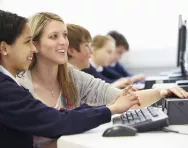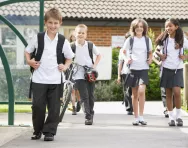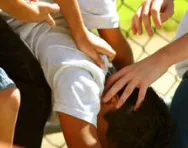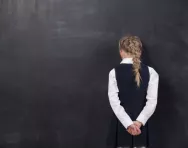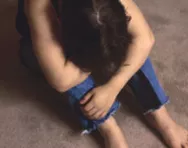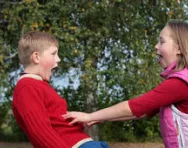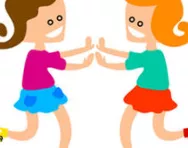Important update from TheSchoolRun
For the past 13 years, TheSchoolRun has been run by a small team of mums working from home, dedicated to providing quality educational resources to primary school parents. Unfortunately, rising supplier costs and falling revenue have made it impossible for us to continue operating, and we’ve had to make the difficult decision to close. The good news: We’ve arranged for another educational provider to take over many of our resources. These will be hosted on a new portal, where the content will be updated and expanded to support your child’s learning.
What this means for subscribers:
- Your subscription is still active, and for now, you can keep using the website as normal — just log in with your usual details to access all our articles and resources*.
- In a few months, all resources will move to the new portal. You’ll continue to have access there until your subscription ends. We’ll send you full details nearer the time.
- As a thank you for your support, we’ll also be sending you 16 primary school eBooks (worth £108.84) to download and keep.
A few changes to be aware of:
- The Learning Journey weekly email has ended, but your child’s plan will still be updated on your dashboard each Monday. Just log in to see the recommended worksheets.
- The 11+ weekly emails have now ended. We sent you all the remaining emails in the series at the end of March — please check your inbox (and spam folder) if you haven’t seen them. You can also follow the full programme here: 11+ Learning Journey.
If you have any questions, please contact us at [email protected]. Thank you for being part of our journey it’s been a privilege to support your family’s learning.
*If you need to reset your password, it will still work as usual. Please check your spam folder if the reset email doesn’t appear in your inbox.
Discipline in primary schools: restorative practices
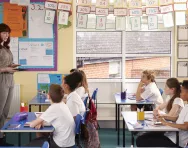
At some point during their primary school years, all children – even the very best behaved – are likely to find themselves in hot water after committing some sort of misdemeanour.
How these incidents are handled will vary from school to school, and also within schools, depending on the severity of the behaviour.

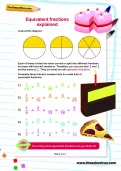
Boost Your Child's English & Maths!
- Weekly programme for each school year
- Worksheets sent direct to your inbox
- Keeps your child's learning on track
And while many schools still use traditional punishments, such as keeping children in at breaktime or sending them to the headteacher, a growing number are adopting restorative practices to improve the behaviour choices of their pupils.
What are restorative practices?
Restorative practice is a set of principles and practice that encourages children to take responsibility for their behaviour by thinking through the causes and consequences.
‘In a rules-led system, the tendency is for the teacher to tell the child what they’ve done wrong, and how they’re going to pay for it – for instance, by sending them out of the classroom if they’re disrupting the lesson,’ says Chris Straker, a former headteacher and interim Chief Executive Officer of the Restorative Justice Council.
‘The problem with this system is that children don’t learn about the responsibility they had in that situation and how it affected other people, because an adult has intervened and told them what they’ve done wrong.’
Restorative practice, on the other hand, involves helping the child think through their behaviour, its consequences and what they can do to make it better.
‘It’s all about developing, maintaining and repairing relationships, building a community based around empathy and self-learning, where children take responsibility for their behaviour,’ Chris says.
Primary school restorative practice in action
Restorative practices centre around a set of key questions that help children think about their behaviour and understand how they can correct it:
- What happened?
- What were you thinking and feeling at the time?
- What have you thought about it since?
- Who has been affected and in what way?
- How could things have been done differently?
- What do you think needs to happen to make things right?
For example, Max has hurt Sam in the playground. They sit down together with a teacher, who helps Max think through the above questions:
- What happened? ‘I tripped Sam up in the playground.’
- What were you thinking and feeling at the time? ‘I was angry because he laughed when I fell over playing football.’
- What have you thought about it since? ‘I’m still cross that he laughed but I feel bad that he got hurt.’
- Who has been affected and in what way? ‘Sam grazed his knees and it made him cry. He had to stop playing football because it hurt too much.’
- How could things have been done differently? ‘I could have told Sam that I was angry that he laughed at me and asked him not to. I could have walked away and found someone else to play with.’
- What do you think needs to happen to make things right? ‘I need to say sorry to Sam and try not to lose my temper next time.’
Sam is also asked the same set of questions. This helps him identify his part in what happened, and communicate how Max’s actions affected him.
In another situation, Joanne was continually chatting and distracting the children on her table during a maths lesson. After the lesson, the teacher asks:
- What happened? ‘I was talking too much in maths.’
- What were you thinking and feeling at the time? ‘I was bored because I don’t like maths.’
- What have you thought about it since? ‘I’m sorry I disturbed the class but I didn’t understand the work.’
- Who has been affected and in what way? ‘I stopped my friends from doing their work and I made you [the teacher] cross because you had to keep stopping to tell me off.’
- How could things have been done differently? ‘I could have put my hand up and asked you to explain the problem to me.’
- What do you think needs to happen to make things right? ‘I need to say sorry and ask you to show me how to do the work.’
‘Exactly what restorative practice looks like will depend on the children’s age; for example, with very young children, teachers might use puppets to encourage them to talk about their feelings in a safe way,’ says Chris.
‘The important thing is that you’re not pointing the finger of blame, so children don’t get defensive.’
How schools use restorative practices
‘Primary schools are a great context for restorative practices, with exercises like Circle Time where children can discuss incidents that have happened and the consequences they had,’ says Chris.
Some schools have chosen to formalise restorative practices using the Restorative Thinking Toolkit, which is endorsed by the Anti-Bullying Alliance and the Department of Health.
This involves six two-hour sessions, implemented over half a term, often in PSHE lessons.
It gives pupils the skills to manage conflicts, strengthen relationships, and take responsibility by developing empathy and emotional literacy.
‘We even see Year 5 and 6 children acting as peer mediators and helping younger children work through playground conflicts, which is a great way to model restorative practices to the rest of the school,’ Chris adds.
What are the benefits?
Restorative practices in schools have a number of proven benefits. Children show:
- Improved positivity, resilience and responsibility-taking
- Better behaviour management
- Greater respect and courtesy towards teachers and each other
- Increased empathy
- An understanding of how to make wrongs right.
Schools that use restorative practices have also reported significant reductions in the number of detentions and exclusions.
Headteacher Diane Gallaher of St Mary Magdalen’s Catholic Primary School in Preston commented on how, following restorative practice training, the children in her school were putting their new skills to good use:
‘I could hear a Year 6 child trying to sort out a tiff between two Year 1 children. She went through all the restorative questions… All sorted, no adult needed.’
The skills children learn in primary school are also transferable to life outside school, including within their families, and to secondary school and beyond.
Is there a place for ‘traditional’ methods of discipline?
Chris emphasises that restorative practices shouldn’t be seen as a ‘soft option.’
‘We’re not explaining away or excusing behaviour, but trying to stop repeat offending,’ he says.
‘Once we’ve encouraged children to take responsibility for their behaviour, it becomes a lot harder for them to repeat the harmful behaviour.’
Chris explains that traditional methods of discipline can also be counterproductive. ‘If a child doesn’t like maths, and they get sent out of the room every time they disrupt a maths lesson, there’s no incentive for them to change their behaviour,’ he says.
‘They’d rather be outside in the corridor than taking part in the lesson.
‘Restorative practice encourages them to think about what their problem is with maths, and what triggers the behaviour.’
Of course, schools do still need rules, and in some cases formal punishments are still necessary.
What matters is that the child who has caused harm and the child they harmed are given the space to hold a restorative conversation.
‘This is so much more powerful than a simple “Sorry,” and allows children to understand responsibility and develop empathy for others’ feelings,’ says Chris.
And in many cases, restorative practices lead to long-term and lasting improvements in behaviour and an improved culture of learning.
‘Often, having to sit down and hear how your behaviour has affected someone else is much harder than being kept in at playtime, and leads to much more noticeable changes that can last a lifetime,’ Chris says.
